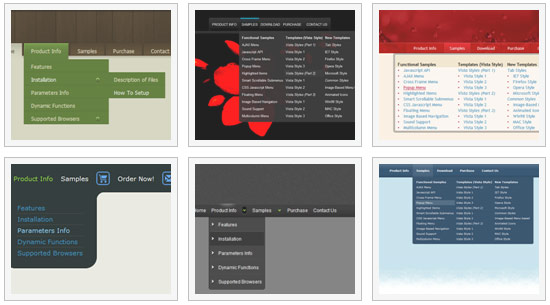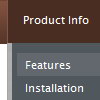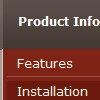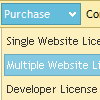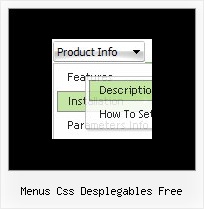Recent Questions
Q: On the left menuline under the a1 link, shall appear the javascript menu div, but after several refreshes, nothing happens.
On the local computer, the javascript menu div is working perfectly!
Can you send me instructions, why this problem appears?
A: You've placed the javascript menu div in
<TD class=sidebar vAlign=top width=160>
tag with the following styles:
.sidebar TR {
DISPLAY: none! important
}
TD.sidebar IMG {
DISPLAY: none
}
.sidebar TABLE TR TD IMG {
DISPLAY: none
}
.sidebar TABLE TR TD {
DISPLAY: none}
That's why you cannot see the javascript menu div. Delete "DISPLAY: none" propertyfrom the style.
Q: I used the glass template to create my menu.... but I needed to add additional tabs, and my additional tabs do not look like the rest of the net dropdown menu tabs... its like the end-caps on the images are not there and I don’t find any clear instruction on how to get my added tabs to look like the existing ones.
A: You should assign Individual styles for the new items. You can findthis info in the Templates window.
Q: Am having problems adding to my site. I have a site all made ready to accept the new menu I made in your trial software. I copy code from the exported page over and place where it seems appropriate. When I preview the menu doesn't display but a link to purchase does. Is this because it is the trial software or something else.
A: When your security settings in browser doesn't allow Javascript onpages you load you can't see a dynamic page content.
Q: I have been working with the trial package for the last couple of days, of which I have been really impressed with. However there have been a couple of things that have frustrated me greatly...
The natural place that I first tried was replacing the "content1" line with a direct URL in the var bmenuItems section but this made no difference at all. I am also trying to work out what each set of "" equate to as I have found a couple of pages on the Internet very similar to this but none of them have nine different sections.
["Home","content1", "", "", "", "", "1", "", "", ],
Is it possible to allow one of the tabs on this template to just open another page? I look forward to your response in regards to these questions and hope to hear from you again soon so that I can crack on with this project.
A: You can't assign links in Dhtml Tabs when you're using var tabMode = 0;.
You can assign only the object's ID of <div> on your page.
Try to set var tabMode = 1;
and use links for your items.

